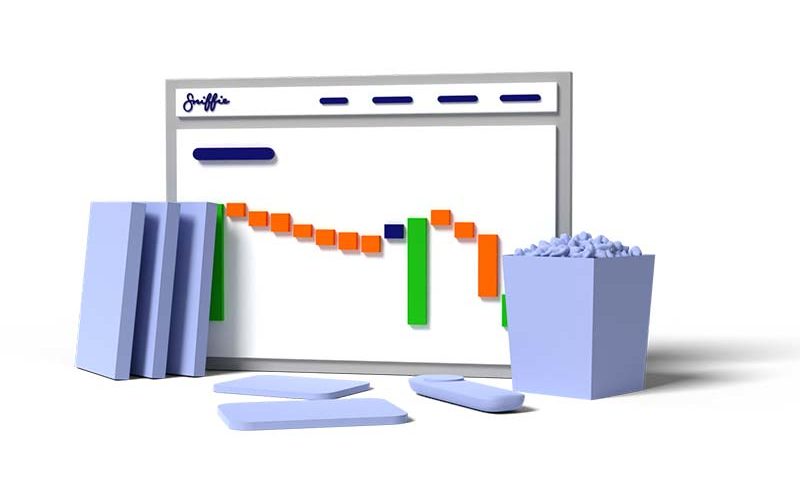As a reseller, understanding industry-specific pricing terminologies is paramount to your success. Beyond simply knowing what RRP stands for, it’s crucial to grasp the nuances of terms like MAP and MSRP, which dictate pricing guidelines within your market.
In this comprehensive guide, we’ll delve into the intricacies of these terms, explore how they impact your pricing strategies, and provide valuable insights to help you navigate the competitive landscape with confidence.
What Does RRP Stand for?
RRP is the short term used when referring to ‘Recommended Retail Price’. But the industry also uses various other terminologies, listed here:
- List price
- Manufacturer’s suggested retail price (MSRP)
- Suggested retail price (SRP)
These terms are most often relevant to resellers’ work methods because it’s the guideline sellers, manufacturers and distributors give them relating to pricing their stock. A RRP is the price that sellers suggest the reseller should sell the item in question for.
The suggested retail price system is one of the methods that help industries and manufacturers standardize prices, especially relevant in industries where an item is sold in different stores or areas. It’s a popular method in the automotive industry as well as consumer appliances, though you’ll come across it in many others too.
The question is how these guidelines should be implemented for the long term success of your company.
How is the Recommended Retail Price Set?
It’s important to clarify that the manufacturer’s suggested retail price is NOT the following:
- It’s not the minimum price you’re allowed to ask for a product
- It’s not the true cost of manufacturing of the item
Manufacturers research what the best recommended retail price should be, because they want the item to perform well in the market. They already calculate markups into the RRPs, keeping in mind that any sale must benefit the reseller in order to give them a reason to act as distributor and keep on ordering more stock.
Download our Free Margin Calculator
Use our Margin Calculator to understand how your price is in line with your costs and preferred margin target.

RRP vs MAP
There are many other pricing acronyms and abbreviations you’ll come across in the reselling industry. These should not be confused with the RRP price, because they describe a vastly different expectation from the seller. One of these important terms is ‘MAP’.
MAP refers to the minimum advertised price . It’s a policy most often put in place by manufacturers. This term will often be referred to in the agreement between seller and reseller where the latter agrees not to advertise the relevant product at any price lower than the MAP.
This is different from RRP, which is simply a suggestion of an appropriate retail price.
There are many reasons why the idea of MAPs is viewed as a positive aspect in retail. It gives smaller businesses a chance to compete with larger established brands and provides the opportunity for all sellers to make a profit from selling the item. Otherwise, why would resellers be interested in stocking the item? If no one is allowed to advertise below a certain price, large retailers with more capital can’t lower their prices so vastly that smaller retailers have no chance to attract customers.
Guidelines like these promote fair competition, empowering small businesses to gain momentum and grow. MAP also carries value for manufacturers that need to protect their brand value. If retailers drop advertised prices considerably, simply to attract buyers, it could hurt the reputation and undermine the brand in the marketplace.
How to Effectively Use Recommended Retail Price as a Reseller
As a reseller, your pricing plays an important role in reaching your business goals, so it’s not to be taken lightly or done impulsively. But many resellers use the RRP price when it comes to pricing because they don’t have the time nor the resources to determine the best price to charge.
Important tip: partnering with price monitoring vendors will empower such a retailer to be proactive in picking more competitive pricing.
Download our free eBook on profitable pricing in eCommerce
Setting prices might seem straightforward, but determining the perfect price point takes some know-how. This book and its tool provide all the essential information and secrets you need.

Is the Manufacturer’s Suggested Retail Price
Your Best Option?
When you use the provided list price, you have a good chance of being on par with many of your competitors. But that doesn’t guarantee that customers will pick you above the rest, does it? For this reason many retailers opt for one of the following:
Charging more than the RRP: You can charge a price slightly above the MSRP, in order to increase your profit margin. If you already have a loyal customer base following you, you may still sell the items at a higher price than the competition, even if you’re not the cheapest on the market.
You can also use this approach with items you know are very popular, with consumers willing to pay a little extra to be included in a current trend. But remember to invest in price monitoring, because you run the risk of losing customers whenever you become one of the more expensive vendors in your niche.
Charging less than the RRP: As stated, a manufacturer doesn’t have legal rights to stipulate exactly what a reseller charges for a certain item. Thanks to this, you’re eligible to charge a slightly lower price than the Recommended Retail Price. This makes good business sense when you’re trying to attract buyers or if you’re trying to get rid of excess stock.
Using the Recommended Retail Price as a Starting Point
As mentioned, agreements between manufacturers and resellers often stipulate guidelines about MSRPs. One such rule may be that even if the RRP isn’t charged, the reseller needs to display it. A common occurrence in the motor vehicle industry is to mention the RRP in the car’s specification documentation or in its window while it’s on display.
Consumers can therefore see the Recommended Retail Price, so the reseller is operating legally, but now the price is simply used as a starting point to negotiate a price. Store discounts, trade-ins of another vehicle or other factors will determine the price the new owner eventually pays.
For car dealerships—and many other industries—it’s therefore important to check the competition’s true prices. A retailer can never assume that its competition will charge the MSRP.
Correct Advertising of Recommended Retail Prices
As can be seen with MAPs discussed above, wording plays an important role in any business. When it comes to recommended retail price advertising, you also have to pick your words wisely.
You can advertise an item at a lower price than the manufacturer’s suggested retail price, but you also need to use price monitoring to gauge what your industry is doing at the moment. You need to know if anyone else is actually using the MSRP price. If all vendors are selling at rates below the RRP and you’re marketing your price as a ‘sale price’—simply because it’s slightly below the listing price—this could be viewed as false advertising.
The Manipulation of the Recommended Retail Price
There’s an additional way that manufacturers and resellers can use the Recommended Retail Price to ensure high profits for all involved. This list price can be manipulated to be exceptionally high, long before the item reaches the shelves for consumers to purchase. In this scenario, manufacturers, distributors and resellers select this high rate because they want the alluring theme of ‘sales’ to attract buyers.
This is where the psychology of retail comes into play.
Many consumers may purchase items purely because they believe they’re getting an exceptional deal.
Here’s the scenario: the Recommended Retail Price is set much higher than the total cost of producing, packaging and shipping the item to retail stores. Resellers can then drop the price well below the recommended retail price and still make profit. They mention in their advertising that it’s a ‘below RRP sale’ and so impress buyers by giving them the impression that they’re getting a bargain.
Once again, you can see the importance of doing proper research of your competition’s pricing, in which case price monitoring service providers like Sniffie are wise to partner with.
Suggested Pricing Methods: What’s the Problem?
It’s clear from many of the mentioned guidelines that pricing methods are often put in place to create a fair market for all. But at the same time it creates challenges for both retailers and consumers.
Retailers are limited in how competitive they can be, because they can’t always use pricing to impress their target market as much as they would like to. They must be careful in how they advertise their wares if they don’t want to face legal repercussions.
Consumers suffer when manufacturers set the suggested retail price at an unnecessary high level. They may simply find it impossible to pay such high rates, or it can affect many people’s ability to maintain a certain lifestyle.
Of course, the consumer’s predicament of not being able to afford items will compound the reseller’s scenario. There will be low sales figures across the board, with smaller businesses finding it much more difficult to manage the matter than their larger competitors.
Finding the ideal price to charge requires in depth market research and price monitoring to keep on being the preferred supplier to consumers.
Summary
You can see that when it comes to pricing, in depth knowledge and understanding is vital. So consider: how well are you managing pricing and do you think you can improve?
The good news: Sniffie’s team members are experts in the field and can help you navigate this intricate aspect of business.
Contact us and let’s talk!


